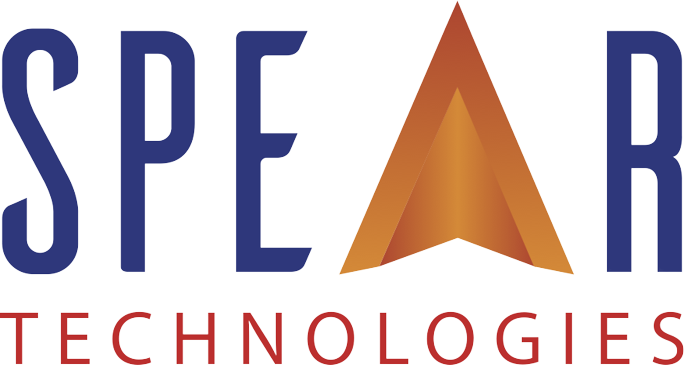7 Ways that Modern Technology Can Help Public Entities with Risk Management & Mitigation

Risk management and risk mitigation are crucial for public entities because they ensure the stability, effectiveness, and integrity of government operations, which directly impact public trust and the well-being of citizens. It is especially important now as inflationary effects have tightened budgets and put more focus on cost management.
Continuity of public services is essential, as these entities provide critical services like healthcare, education, and emergency response. Disruptions caused by unmanaged risks can have severe societal impacts, making risk mitigation strategies vital to maintaining smooth operations, even during crises such as natural disasters or cyberattacks.
Public entities must also ensure regulatory compliance, as failure to manage risks can lead to legal penalties, loss of credibility with the public, and operational disruptions. Effective risk management helps these entities avoid non-compliance, thereby preserving their ability to function within legal boundaries.
Lastly, public confidence and financial stability are directly tied to how well risks are managed. Incidents like financial mismanagement or corruption can quickly erode trust and lead to significant financial losses. Proactive risk management protects public resources, maintains public trust, and ensures funds are used effectively for their intended purposes.
Risk management and risk mitigation are essential methods for helping to control costs. Modern core technology can significantly enhance risk management and risk mitigation for public entities by providing advanced tools and capabilities that streamline operations, improve decision-making, and enhance transparency.
Here are 7 key ways in which modern core technology can help:
- Data Integration and Analytics
- Centralized Data Management: Modern core systems consolidate data from various sources, providing a unified view that aids in identifying and assessing risks. This helps public entities make informed decisions based on comprehensive data insights.
- Predictive Analytics: These systems use machine learning algorithms to analyze historical data and predict potential risks, allowing entities to proactively manage and mitigate them. For example, predicting where infrastructure might fail based on past data can guide preventive maintenance efforts.
- Automation and Efficiency
- Automated Risk Assessment: Automation tools can continuously monitor processes and flag potential risks in real-time. This reduces the reliance on manual oversight and allows for quicker responses to emerging risks.
- Streamlined Compliance: Automated compliance checks ensure that public entities adhere to regulations, reducing the risk of non-compliance penalties. This is particularly important in sectors like healthcare, finance, and environmental protection.
- Enhanced Security
- Cybersecurity Measures: Modern core technology often includes robust cybersecurity features that protect sensitive data and systems from breaches. This is crucial for public entities that manage critical infrastructure or confidential citizen information.
- Risk Mitigation through Artificial Intelligence (AI): AI-driven systems can detect unusual patterns of activity that might indicate a security threat, allowing for early intervention before a breach occurs.
- Disaster Recovery and Continuity Planning
- Resilient Infrastructure: Core systems often come with built-in disaster recovery solutions that ensure continuity of operations even in the face of catastrophic events. This reduces downtime and mitigates the impact of disasters on public services.
- Scenario Planning: Advanced technology enables public entities to simulate various risk scenarios and develop contingency plans, improving preparedness for unexpected events.
- Improved Communication and Collaboration
- Real-Time Collaboration Tools: Core technology platforms often include features that facilitate communication and collaboration across departments. This ensures that all stakeholders are aware of potential risks and can work together to mitigate them.
- Stakeholder Engagement: Technology also enables better engagement with the public and other stakeholders, fostering transparency and trust in how risks are managed.
- Regulatory Compliance and Reporting
- Automated Reporting: Modern systems can automate the generation of reports required for regulatory compliance, ensuring accuracy and timeliness. This reduces the risk of errors in compliance reporting, which can lead to fines or legal issues.
- Audit Trails: Core technology provides detailed audit trails, making it easier to track and review decisions, which is essential for accountability and transparency in public entities.
- Operational Resilience
- Proactive Monitoring: Continuous monitoring tools help identify risks in real-time, allowing public entities to take preemptive action. This is particularly useful in managing risks associated with infrastructure, public health, and emergency response.
- Adaptive Risk Management: Modern technology supports adaptive frameworks that evolve with emerging risks, ensuring that risk management strategies remain relevant and effective over time.
Examples of Technology in Action
- AI in Predictive Maintenance: Public entities can use AI to predict equipment failures, reducing downtime and maintenance costs. This is particularly useful in utilities, transportation, and public infrastructure.
- Blockchain for Transparency: Blockchain technology can be used to ensure transparency in public procurement processes, reducing the risk of fraud and corruption.
Summary
In today’s challenging economic climate, public entities must prioritize effective risk management and mitigation to ensure the continuity of essential services, maintain regulatory compliance, and preserve public trust. Modern technology plays a pivotal role in enhancing these efforts by offering advanced tools and capabilities that streamline operations, improve decision-making, and bolster security.
Key technological advancements such as data integration, predictive analytics, automation, and AI-driven security measures enable public entities to proactively identify, assess, and address potential risks. Additionally, features like disaster recovery solutions, real-time collaboration tools, and automated compliance reporting enhance operational resilience and transparency. By leveraging these technologies, public entities can better manage risks, protect public resources, and maintain the trust and well-being of the communities they serve.
To see first-hand how your organization can better manage and mitigate risk with SpearClaimsTM, our award-winning multi-line claims management system built by industry experts on a modern low code platform that delivers the power of built-in AI and Analytics while lowering your total cost of ownership, Schedule a Demo.
To discover how Spear’s solutions are accessible to insurers of all sizes, Request Pricing.



